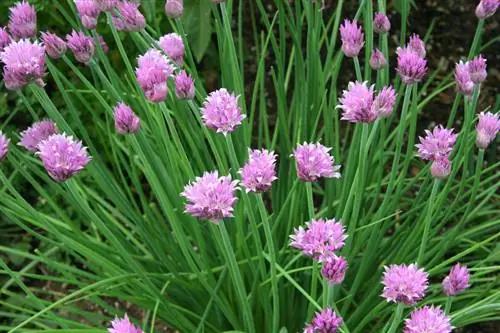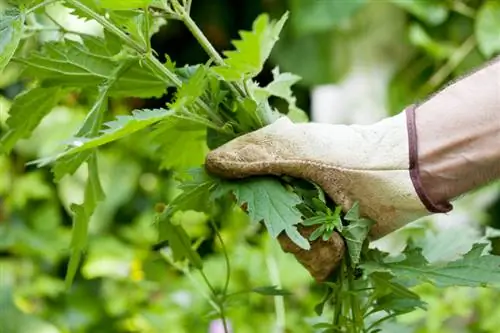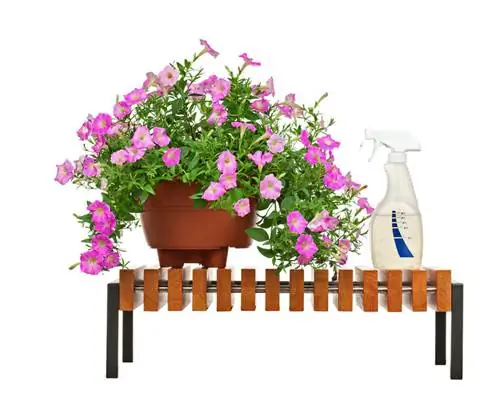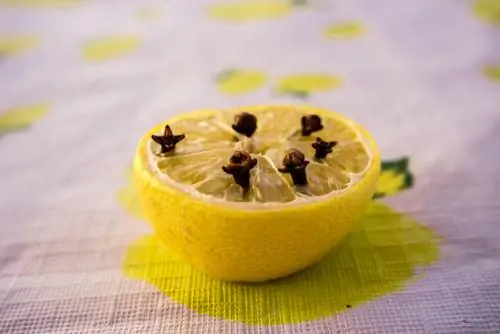- Author admin [email protected].
- Public 2023-12-16 16:46.
- Last modified 2025-01-23 11:22.
Humming wasps in the tree trunk raise worried questions in the hobby garden. Why do wasps colonize a tree trunk? What options are available against the uninvited guests? Read here about common reasons for wasps in tree trunks with tips for gentle countermeasures.
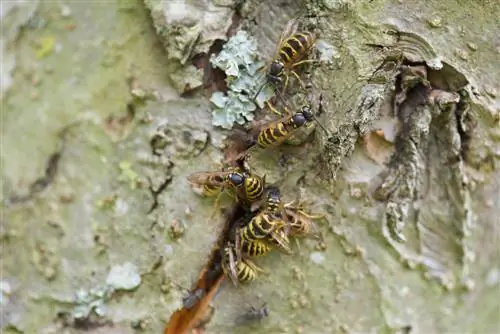
How to deal with wasps in the tree trunk?
Wasps in the tree trunk are usually due to egg laying or nest building. Gentle countermeasures include planting the tree disk with wasp-repellent herbs and removing abandoned hornet nests. However, wasps are protected and should ideally be tolerated.
Why are there wasps in the tree trunk?
The two most common reasons for wasps in the tree trunk areEgg layingandNest building If isolated wasps crawl around in the tree trunk, they are wood wasps (Siricidae). Females lay their eggs in the tree trunk using ovipositors and leave the larvae to fend for themselves for two to four years.
If the tree trunk has a dark height, hornets usually come to build a nest. Very rarely, the common wasp or the German wasp builds its nest in a tree trunk cavity.
What to do against wasps in the tree trunk?
Because wasps in the tree trunk are protected, you can tolerate the insects or gently drive them away. These methods scare away wasps forever:
- Plant tree slices with herbs such as lavender (Lavandula), basil (Ocimum basilicum), wormwood (Artemisia absinthium), lemon balm (Melissa officinalis).
- Green the tree trunk with wasp-deterrent plants, such as frankincense (Plectranthus), scented geraniums (Pelargonium crispum) and tomatoes (Solanum lycopersicum).
- Fight aphids in the garden so that the honeydew food source dries up.
Are there protective measures against wasps in tree trunks?
Abandoned hornet nests toremoveand tree hollows toclose up are the best protective measures against a new infestation of wasps in the tree trunk.
The hornet (Vespa crabro) is a repeat offender that likes to nest in the same tree trunk for several years. Of course, the queen creates a new hornet nest every year. The smell of abandoned nests guides a hornet queen looking for a place to live. No protective measures are necessary against wood wasps, because this type of wasp does not sting and is not interested in sweets.
Tip
Parasitic wasps welcome
Parasitic wasps have few things in common with annoying real wasps (Vespinae). Parasitic wasps (Ichneumonidae) are delicate waist wasps, do not sting and do not challenge us for soda, cake or ice cream. Instead, parasitic wasps provide the natural garden with powerful support in the fight against pests. Female parasitic wasps parasitize the eggs of moths, spiders, borers, mosquitoes and other rabble that roam around the garden and house.


